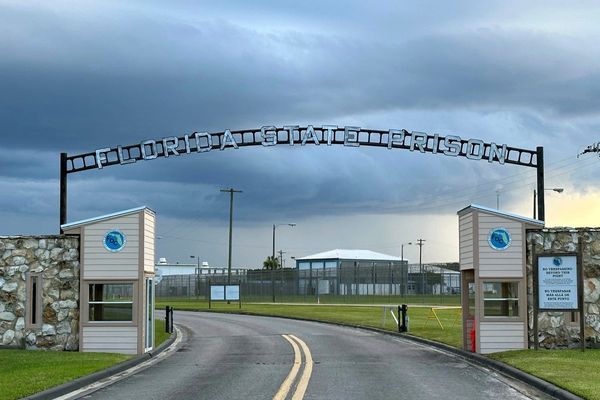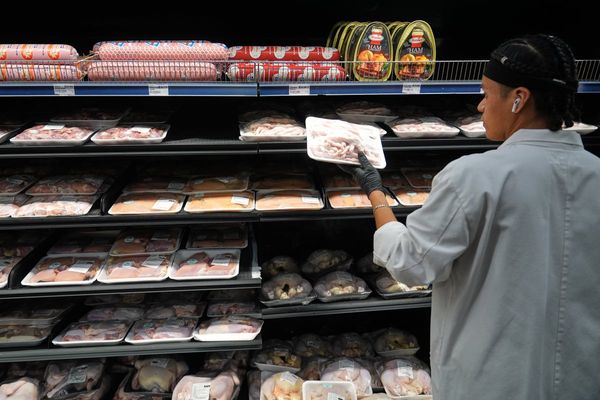
There’s nothing like the thrill of watching a golf shot cut through the sky.
Golf is rooted in that feeling. But for the Scots who invented the game, the anticipation extended to the ground, with golfers knocking balls along the humps and lumps of firm terrain.
You can still play golf that way at Scottish links and a few select, sand-swept resorts in the U.S. But for the most part, Scottish-style links are tough to find in in the U.S., with a few jewels like Bandon Dunes in Oregon and Mammoth Dunes in Wisconsin standing out as rare U.S. Scottish-style links.
The last place in America you’d expect to find a links course would probably be central Texas. But here we are.
Meet Loraloma, a new, private course from Scottish architect David McLay Kidd, which opened last week about 30 minutes due West of Austin. McLay Kidd has built more than 30 tracks around the world, including—you guessed it—Bandon Dunes in Oregon and Mammoth Dunes in Wisconsin. His newest creation follows those blueprints, but it's also wholly unique.
For his first-ever Texas creation, McLay Kidd took on a challenge of carving a linksland into rocky, scrubby typography. It was far from simple, but Loraloma opened with 18 holes or pure, deep-green fairways and green complexes that are firm, fast and flowing with the mounds and hills that are a hallmark of a links course, making many shots at Loraloma a rollicking good time.
“A huge challenge,” McLay Kidd says of the build. “A hard task, and not just because of all the rocks. But the team bought into the vision, and we were able to execute.”
Loraloma's Defining Decision
Early in the project, McLay Kidd face a daunting choice: what grass to lay down to give his track the best chance to play firm and bouncy, but also be sustainable in Texas’s harsh weather? He’d built around the world several “sand-topped” courses, where a layer of sand is placed atop existing soil and grass is then planted, grown and maintained. But McLay Kidd was skeptical that a sand-top would cut it in Texas.
“There was temptation to put in the sand-top because you want to feel the turf. But this soil here is a living, breathing organism,” he says. “There’s life in the dirt, and it can grow grass.”

McLay ultimately found a sod farm south of San Antonio with a durable Zoysia grass that he felt could do the job. But he’d never built a course with that turf anywhere else, and his plan in Texas was to use it wall-to-wall—tees, fairways, rough and greens. Even with as much as he knew about agronomy, this one was still a bit of a gamble.
“A 5 million decision,” he says, citing the cost to purchase and lay that sod. It was also the amount he estimated he would save from the budget by skipping the sand option. It would also require far less water than the alternative.
“With sand, if you don’t water it, it’ll just dry right out,” he says. “But this soil here retains water. It just soaks right in and stays.”
McLay Kidd spent about 150 days on property to oversee the development. Because the terrain was so rocky—a typical feature of central Texas—his excavators couldn’t dig much more than a couple of feet below the surface. There was no drastic reshaping of the land here. It's all right there in front you, with half of the holes in view of the Pedernales River, which feeds into Austin's famed Lake Travis. Some of the vast open space will eventually be filled, and plans call for a clubhouse, luxury homes, a recording studio and even a marina.
But first there is the golf course. With the $5 million decision made and the sod laid, McLay Kidd's team on site needed to keep the turf not only alive, but trimmed short to provide the roll. And so Loraloma installed a high-tech system called turfRad, which measures soil moisture at hundreds of thousands of points throughout the course. The team uses artificial intelligence to process the data and activate each individual sprinkler as needed, based on those readings.
“A par 4 fairway can have up to 10,000 data points,” says Stewart Naugler, Loraloma’s director of agronomy. “So each area receives exactly what it needs, no more and no less. The result is informed irrigation that supports playability, consistency and sustainable water use.” Naugler estimates that Loralama uses about 50% less water than it might otherwise soak up without the technology.
Add it all up, and Lolaloma presents pure verdant fairways, greens and rough with virtually no brown patches or damp spots from overwatering. It’s a rumpled landscape of bouncy fairways and humps and swales splayed across massive green complexes. Ignore the cacti and scrub brush outside the perimeter, and you’ve got the closest thing to a Scottish golf experience the state of Texas has likely ever seen.

The par-3 9th hole is especially fun. McLay Kidd wanted a creative way to close the opening nine that would also be memorable for finishing on-course wagers, so he laid down the shortest hole on the course with forward tee boxes perched atop a rise, so players can grab putters and send tee shots rolling 100 yards down the slope and onto the putting surface. Again: a 100-yard putt is not something typically found in Texas.
There’s also a Scottish style double-green for the 2nd and 13th holes. One of my playing partners sent his approach on 2 well long, and then slammed a putt from near the 13th pin to the 2nd hole—probably 150 feet—settling his ball a foot from the cup for a rare lag-putt worth going home and bragging about.
That’s the thing about links golf: the fun-factor can pop up at any moment.
The 17th is a 182-yard par 3 with a green settled in a bowl, so shots can land 30-40 feet away from the pin and potentially funnel in—or, shots can catch the wrong side of a slope and run away. (This writer came about 10 inches from his first-ever ace thanks to a lucky break off a mound.) The 18th is a dramatic double-dogleg par-5 with forced carry off the tee and a ravine to clear on the approach, finishing a layout that tips at 7,412 yards. There's an array of tee boxes to accommodate players of any ability.
The course is open only members, and Loraloma is selling plots for members to build a dream home and have exclusive access to McLay Kidd's stunning, lush creation.
“We got creative here and it paid off,” McClay Kidd says. “Just a spectacular effort from the folks on site, who stayed with the vision and worked so hard to deliver a special course. I couldn’t be more proud.”
More Golf Coverage on Sports Illustrated
This article was originally published on www.si.com as A '$5 Million Decision’ Brings Scottish-Style Links Golf to Texas.







